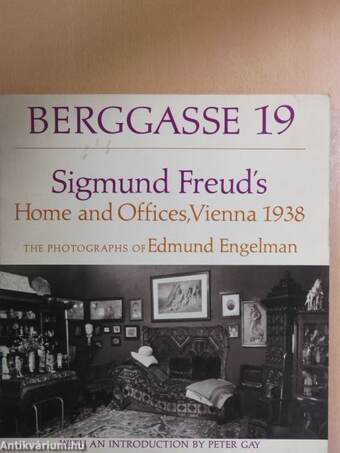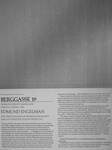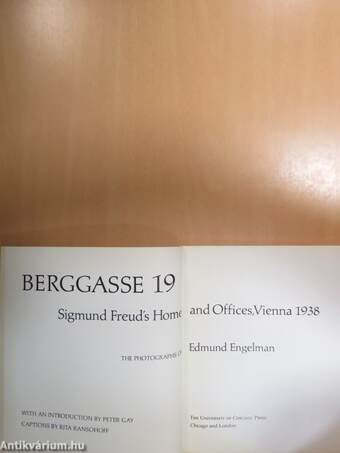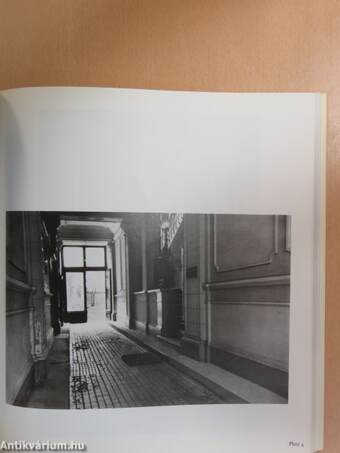1.068.093
kiadvánnyal nyújtjuk Magyarország legnagyobb antikvár könyv-kínálatát

VISSZA
A TETEJÉRE
JAVASLATOKÉszre-
vételek
Berggasse 19
Sigmund Freud's Home and Offices, Vienna 1938
| Kiadó: | The University of Chicago Press |
|---|---|
| Kiadás helye: | Chicago |
| Kiadás éve: | |
| Kötés típusa: | Fűzött papírkötés |
| Oldalszám: | 153 oldal |
| Sorozatcím: | |
| Kötetszám: | |
| Nyelv: | Angol |
| Méret: | 27 cm x 25 cm |
| ISBN: | 0-226-20847-8 |
| Megjegyzés: | Fekete-fehér fotókkal. |
naponta értesítjük a beérkező friss
kiadványokról
naponta értesítjük a beérkező friss
kiadványokról
Fülszöveg
EDMUND ENGELMAN
THE PHOTOGRAPHS OF EDMUND ENGELMAN With AN INTRODUCTION BY PETER GAY
"In June of 1938, a few days before the Freud family was to leave Vienna for London, August Aichhorn, an intimate of Freud, asked a young photographer friend, Edmund Engelman, to take pictures of Freud's place of residence so that there would be a visual record of the surroundings in which psychoanalysis came into being. At Berggasse 19, Freud achieved his startlingly new, deeply upsetting insights into himself and others that have reshaped our views of man. Here he treated patients, wrote nearly all his most important works and met with the Wednesday discussion group which he used to test his new ideas—the first, and for a long time the only psychoanalytic society. It was here that he met his friends, and later his followers who came from all over the world to see him. Here he lived with his family for nearly half a century. How natural it is for us to wonder, then, whether the setting... Tovább
Fülszöveg
EDMUND ENGELMAN
THE PHOTOGRAPHS OF EDMUND ENGELMAN With AN INTRODUCTION BY PETER GAY
"In June of 1938, a few days before the Freud family was to leave Vienna for London, August Aichhorn, an intimate of Freud, asked a young photographer friend, Edmund Engelman, to take pictures of Freud's place of residence so that there would be a visual record of the surroundings in which psychoanalysis came into being. At Berggasse 19, Freud achieved his startlingly new, deeply upsetting insights into himself and others that have reshaped our views of man. Here he treated patients, wrote nearly all his most important works and met with the Wednesday discussion group which he used to test his new ideas—the first, and for a long time the only psychoanalytic society. It was here that he met his friends, and later his followers who came from all over the world to see him. Here he lived with his family for nearly half a century. How natural it is for us to wonder, then, whether the setting permits insights into some of these famous events in the history of psychology."—Bruno Bettelheim, New York Times Book Review "There is much that Freud has not allowed posterity to know about him. And it is this selective discretion that makes Edmund Engelman's photographs something more than the poignant record of a historic laboratory. They help to fill out a puzzle from which too many pieces are missing." —From the Introduction by Peter Gay
"Freud looked at the collection of prints, already growing, that would record the Freud home. He smiled broadly and said: 'Ich danke Ihnen herzlich. Das wird fur mich viel bedeuten.' (Idiomatically, 'I am most grateful. It means a lot to me.') We too are grateful; the photographs mean much ¦ to us ^lso."—Philip Morrison, Scientific American
"This album contains scholarly notes identifying the objects in each picture and relating them to Freud's life and ideas. It also includes a brief memoir by Engelman recalling those extraordinary days and Freud's gentle temper at the end of his Viennese career, just a year before his death. And there is a lucid and informative introduction by Peter Gay remarking the interplay of Freud's character, thought and culture. But the pictures tell their own story, and that concerns a bourgeois gentleman who had promised his future wife, in 1882, 'a little world of happiness, of silent friends and emblems of honorable humanity,' where they could 'pass our life in calm happiness for ourselves and earnest work for mankind.' "—The New Republic
EDMUND ENGELMAN is a consulting engineer in photographic technology.
PETER GAY, Durfee Professor of History at Yale University, is the author of a number of scholarly works on twentieth-century Germany including Weimar Culture, winner of the Ralph Waldo Emerson Award.
Photography/Psychoanalysis
BERGGASSE 19
SIGMUND FREUD'S HOME AND OFFICES, VIENNA, 1938 Vissza
Témakörök
- Idegennyelv > Idegennyelvű könyvek > Angol > Művészetek > Fotóművészet
- Idegennyelv > Idegennyelvű könyvek > Angol > Helytörténet
- Helytörténet > Külföldi > Városok
- Pszichológia > Alkalmazott lélektan > Pszichotechnika > Pszichoanalitika > Freudizmus
- Pszichológia > Pszichológia története, módszerei > Tanulmányok
- Pszichológia > Idegennyelvű > Angol
- Művészetek > Fotóművészet > Albumok > Külföldi
- Művészetek > Fotóművészet > Albumok > Tematikus
- Művészetek > Fotóművészet > Idegen nyelv > Angol
- Művészetek > Fotóművészet > Témái > Egyéb
- Idegennyelv > Idegennyelvű könyvek > Angol > Pszichológia
Megvásárolható példányok
Nincs megvásárolható példány
A könyv összes megrendelhető példánya elfogyott. Ha kívánja, előjegyezheti a könyvet, és amint a könyv egy újabb példánya elérhető lesz, értesítjük.











